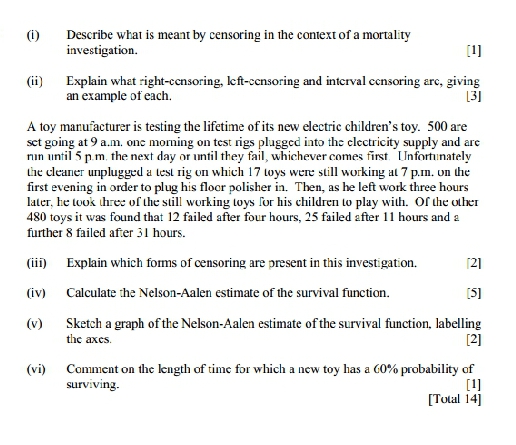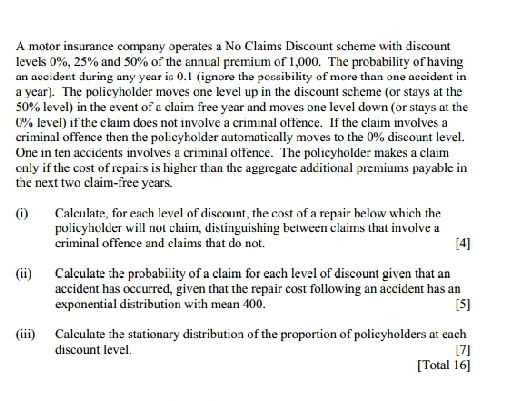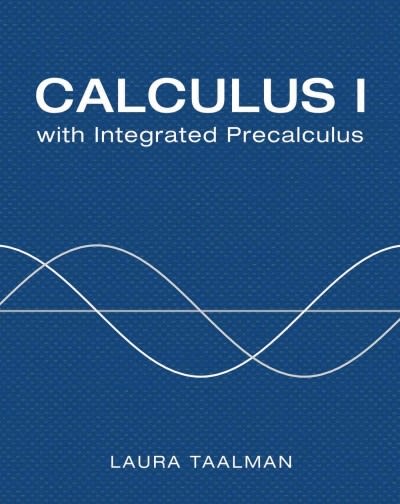Please i need help. Solve all the parts
Describe what is meant by censoring in the context of a mortality investigation. [1] (ii) Explain what right-censoring, left-censoring and interval censoring arc, giving an example of each. (3] A toy manufacturer is testing the lifetime of its new electric children's toy. 500 are set going at 9 a.m. one morning on test rigs plugged into the electricity supply and are mun until 5 p.m. the next day or until they fail, whichever comes first. Unfortunately the cleaner unplugged a test rig on which 17 boys were still working at 7 p.m. on the first evening in order to plug his floor polisher in. Then, as he left work three hours later, he took three of the still working toys for his children to play with. Of the other 480 toys it was found that 12 failed after four hours, 25 failed after 11 hours and a further 8 failed after 31 hours. (iii) Explain which forms of censoring are present in this investigation. 121 (iv) Calculate the Nelson-Aalen estimate of the survival function. [5] (v) Sketch a graph of the Nelson-Aalen estimate of the survival function. labelling the axes. [2] (vi) Comment on the length of time for which a new toy has a 60% probability of surviving. [1] [Total 14]A motor insurance company operates a No Claims Discount scheme with discount levels 0%, 25% and 50% of the annual premium of 1,000. The probability of having on accident during any year is 0.I (ignore the possibility of more than one accident in a year]. The policyholder moves one level up in the discount scheme (or stays at the 50% level) in the event of a claim free year and moves one level down (or stays at the 0% level) if the claim does not involve a criminal offence. If the claim involves a criminal offence then the policyholder automatically moves to the 0% discount level. One in ten accidents involves a criminal offence. The policyholder makes a claim only if the cost of repairs is higher than the aggregate additional premiums payable in the next two claim-free years. Calculate, for each level of discount, the cost of a repair below which the policyholder will not claim, distinguishing between claims that involve a criminal offence and claims that do not. [4] (ii) Calculate the probability of a claim for each level of discount given that an accident has occurred, given that the repair cost following an accident has an exponential distribution with mean 400. [5] (iii) Calculate the stationary distribution of the proportion of policyholders at each discount level. [Total 16]








